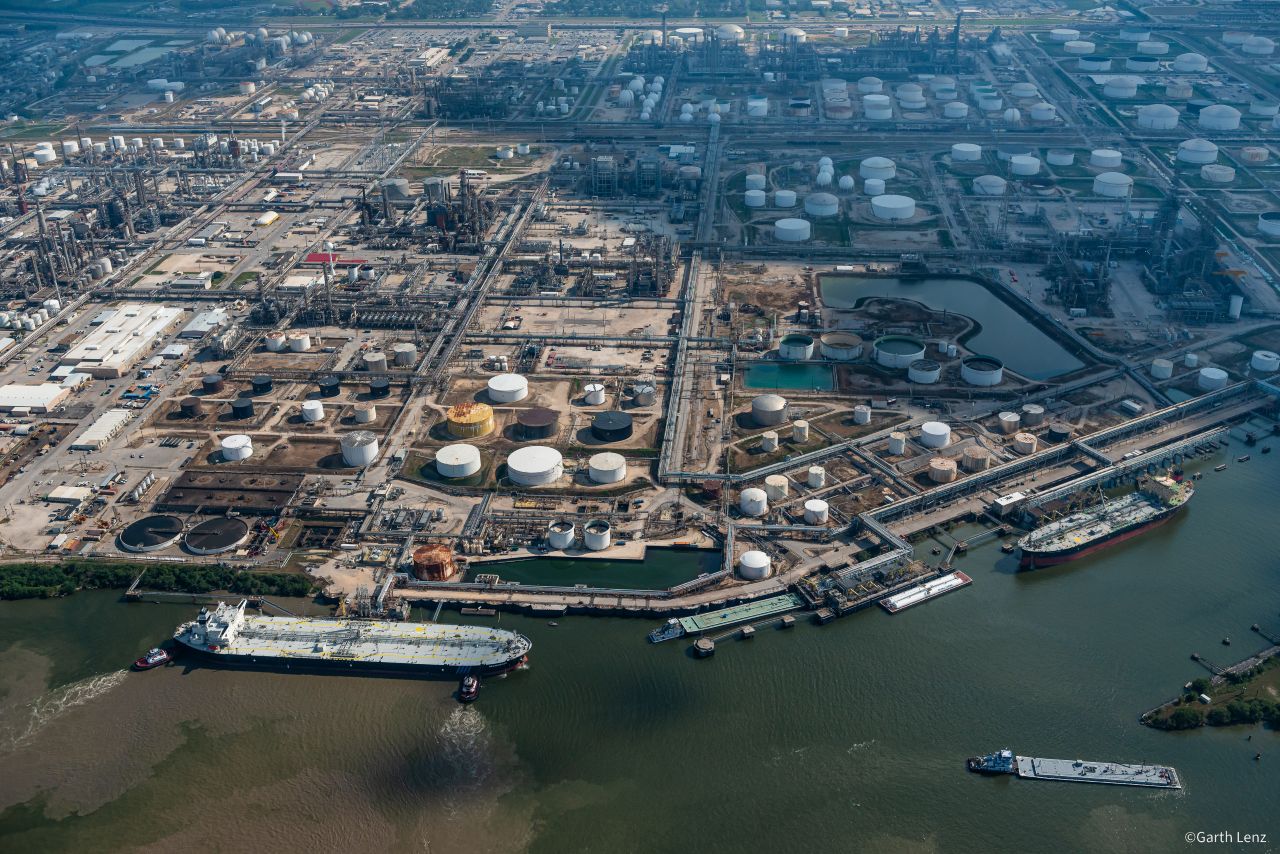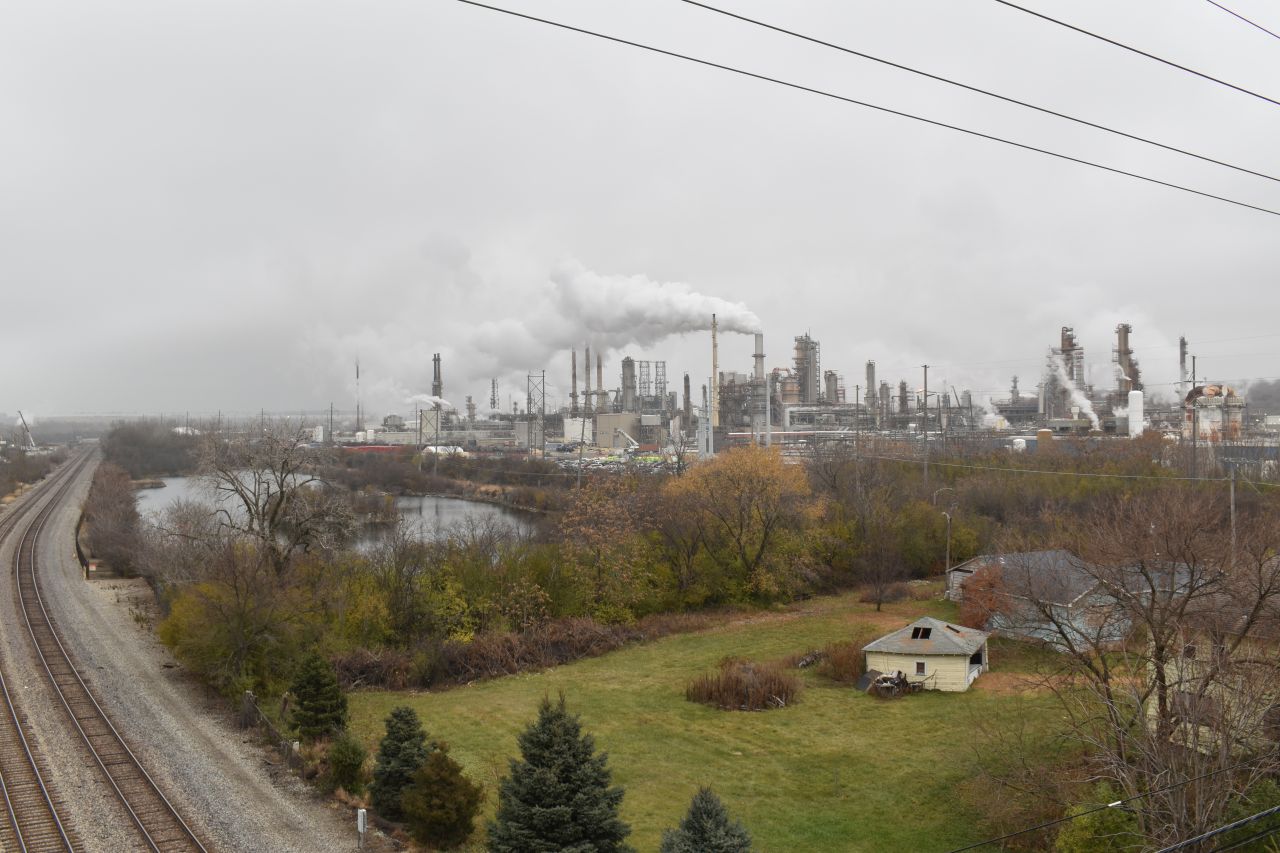In eastern Ohio, environmental justice fight brews over a tires-to-energy plant

YOUNGSTOWN, Ohio – On Thursday night, more than 100 people crowded a gym in a community center here. Staff with the Ohio Environmental Protection Agency at times struggled to maintain order as people shouted angrily at them, insisting that they not put a waste-to-energy plant in an area that’s already suffered a large share of pollution.
At issue was a proposed project to take old tires, chop them up, treat them with chemicals and convert them into a form of synthetic gas. An Ohio-based company called SOBE Thermal Energy would then burn this “syngas” to generate steam that would heat buildings in downtown Youngstown, as an alternative to burning natural gas.
The proposal is one of at least 32 new chemical recycling plants proposed across the U.S. that would convert waste products such as tires and plastics into fuel or ingredients for manufacturing new plastics, chemicals, or other products, according to public records compiled in the Oil and Gas Watch database. Eleven such chemical recycling plants are already operating today in the U.S.

Most in the audience here expressed spirited opposition to a chemical recycling plant in their back yard. “Stop SOBE” signs are posted in front yards around town. And volunteers with the group passed out flyers with pictures of guinea pigs, arguing that Youngstown residents should not be test subjects for a little-known technology. Almost two thirds (64 percent) of the 49,180 residents who live within three miles of the project are people of color and 63 percent are low income, according to EPA data.
“They say it’s the circular economy and chemical advanced recycling,” said Susie Beiersdorfer, one of the leaders of a group called SOBE Concerned Citizens. “There’s so much greenwashing and hype around this.”
On the other side of the debate, at least 15 people at the hearing were in favor of the project. They wore black T-shirts with “SOBE Proud” on the front. The shirts had a graphic of an atom and the phrase “Creating a Cleaner Future” on the back.
The CEO of SOBE Thermal Energy, David Ferro, sat in the front row, flanked by two others in SOBE shirts, listening throughout the hearing.
“We know we will solve the world’s problems as it relates to waste – it’s not even a question,” Ferro said in an interview after the hearing.

Ferro lives in Dublin, Ohio, a well-to-do suburb of Columbus. Some in the audience hollered at him: “build it in Dublin!” His hometown is only a two-and-a-half-hour drive away, but seemingly a world apart from Youngstown, a formerly prosperous city hollowed out by the closure of steel plants in the 1970s.
Ferro’s company already provides steam and chilled water – heating and cooling – to about 40 buildings in downtown Youngstown with energy provided by natural gas burners installed on a former coal plant.
But instead of ordinary natural gas delivered via pipeline, Ferro plans to start burning synthetic gas generated from shredded tire chips. The gas produced would consist of a mixture of 55 percent methane and 35 percent hydrogen, with the rest composed of other hydrocarbons found in natural gas, according to the company.

During the meeting, Ohio EPA officials tried to assure attendees that the project would be safe and would not significantly harm the local air quality. But volunteers with SOBE Concerned Citizens called the plant a potential catastrophe in a neighborhood that has already suffered decades of pollution and lack of opportunity.
The proposed plant could emit up to 11 tons per year of fine particulate matter, which can trigger heart and asthma attacks, as well as 47 tons per year of nitrogen oxides and 19 tons per year of sulfur dioxide, which both contribute to smog, according to permitting records on file with Oil & Gas Watch. The plant could also release up to 19 tons per year of carbon monoxide and less than a ton of regulated hazardous or toxic air pollutants.
For months ahead of the meeting, Youngstown Mayor Jamael Tito Brown had avoided taking a strong position on the plant, saying in a TV interview that he would “listen to the citizens.” At the hearing, he gave a nearly four-minute speech where he described Youngstown as “a community barely rebounding from 50 years of economic decline because of the outside forces beyond our control.”
“I grew up in this community and I was asthmatic,” Brown said. “Every time and anytime those steel mills would run, I would be sick or have an asthma attack. I wish there was a group of citizens like yourself in a room just like this, when they decided that they wanted to put steel mills in their community, that would have been here to stand up and say, ‘This is why we won’t take this.’”

Brown went on to list his concerns, including self-monitoring provisions in the permit that allow SOBE to police itself. He also said he was concerned about the safety of the stockpiles of tire chips, the location of the plant close to people’s homes, and the wastewater that could be discharged to the sewers or the nearby Mahoning River. He raised questions about “the uncertainty of the technology that they’re proposing.”
Some councilmembers and residents fighting the plant say Youngstown’s zoning ordinance doesn’t allow the kind of industrial activity at the site SOBE Thermal Energy is planning.
Anita Davis, a councilwoman representing Youngstown’s 6th ward, said the Ohio EPA appeared prepared to issue the permit and called on residents to get city leadership “off our sticks and to see what we can do.”
“I’m asking you to put pressure on me, my colleagues, and our administration to get this in line,” she said. “Because we are the only ones who might be able to put a stop to this.”
Tom Hetrick, Youngstown city council president and another opponent of the chemical recycling project, said he was concerned about the possibility of fires or other accidents. He read about a massive 2021 fire at a Brightmark plastics pyrolysis plant in Ashley, Indiana. The fire generated a storm of controversy that in part led to a similar Brightmark plant being canceled in Macon, Georgia, because of the community pushing back.
“That’s when the red flags started going off in my head,” Hetrick said of the Indiana fire. “We really don’t want that in the middle of Youngstown.”
One comparison Hetrick and other opponents make is to a notorious Youngstown boondoggle. A California company had made big promises to create a $20 million manufacturing plant for a product called Chill Can, claimed to be the world’s self-cooling beverage holder. Years later, nothing came of the proposal, which only led to embarrassment and legal efforts to recover a $1.5 million taxpayer-funded grant to help build it.
“People think this is going to be the next Chill Can,” Hetrick said.
‘You don’t know what you don’t know’
The CEO of SOBE Energy, David Ferro, thinks his opponents simply do not understand – or do not want to understand – his ideas.
In an interview after the public hearing, he said he wasn’t surprised at the outrage he heard. He said he had heard similar reactions during previous public meetings over his last few years working in Youngstown.
“We fully expected there would be people describing their worst nightmare,” Ferro said. “If you don’t know what you don’t know, you grab onto what you do know.”
According to the Ohio EPA, the process involves feeding approximately 88 tons per day of tire chips into a device at the plant called the Thermolyzer, which converts the chips into a mixture of methane and hydrogen in a low-oxygen atmosphere. The gas would then be fed into “gas cleaning units,” or burned off in an enclosed flare that must always remain lit. Because it would be enclosed, neighbors would not see a flame, the way they would at an oil refinery or other type of site with a flare, according to Ferro and the Ohio EPA.

One of the points of confusion around the SOBE controversy is that few people seem to understand what exactly Ferro plans to do with the site. Ferro admits that he is the main source of this confusion. On his company’s website and in early public meetings and articles, he’d often talk about how they wanted to expand the technology into other areas – processing plastics or electronics waste, harvesting other types of fuel or waste products, even mining cryptocurrency.
The talk about plastics has made it more reasonable for opponents to compare SOBE to other plastics chemical recycling plants that have experienced fires and explosions. On Aug. 6, a plastic chemical recycling plant in Albuquerque caught fire, releasing hazardous pollutants into the air.
For now, Ferro said he’s focused only on processing the tires, which allow him to harvest two types of solid byproducts with market value: carbon black, used in dyes and in making new tires; and steel, tiny threads of which help give tires their structure.
“We’re guaranteed to be financially successful using tires,” he said.
As Ferro tells it, SOBE has already improved the environment in Youngstown. When he took over the steam heat plant, he stopped burning coal and switched to natural gas. He said he also cleaned up asbestos left from former building materials and removed decades worth of toxic coal ash left on the ground.
“I love it when people bring up environmental justice,” Ferro said. “Because when we sit down with the EPA, we tell them we are environmental justice. We are the vehicle that you envision, and here’s why: Because we're going to clean the environment, we're going to do it in an area that needs help, like Youngstown, we're going to offer higher paying jobs, which gives tax revenues to the city that they don't have.”

At the hearing, the Ohio EPA seemed to fall more on Ferro’s side of the argument than the opposition’s. Asked about the comparison to other pyrolysis disasters, Ohio EPA Division of Air Pollution control manager Tim Fischer said he didn’t think the SOBE plant would make local air quality worse.
“It’s an acceptable impact to the air around here,” Fischer said. “It’s much smaller than other sources of [fine particle pollution] around here.”
For example, the SOBE plant’s emissions would be fraction of the pollution from a steel plant located less than two miles away, the Vallourec Star Youngstown Steel Plant.
Statements like that did little to assure the opponents in the crowd. Youngstown resident Corrine Sanderson spoke at the hearing about family members who had contracted rare forms of cancer, which they later connected to their work in the local steel mill.
“It may be that everything sounds great now, but it's down the road that I'm concerned about,” she said.
Lead photo: Susie Beiersdorfer, a leader of the group SOBE Concerned Citizens of Youngstown, holds one of the group's signs opposing the proposed tires-to-energy plant.















